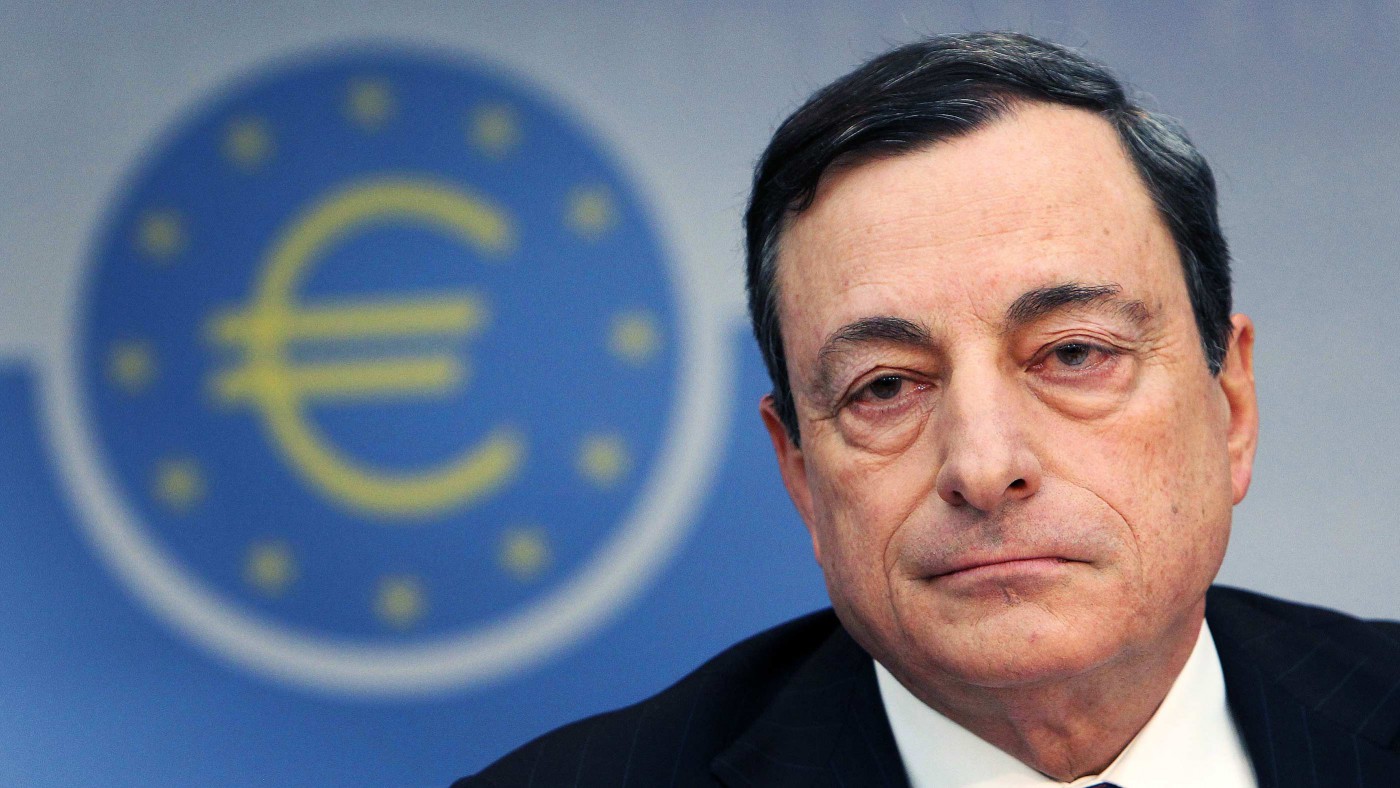Seven years after the first bank in the eurozone failed and was bailed out by the German government, the eurozone economy is still on its knees. It has broken banks, crushing debts and a huge shortfall of demand. So big hopes were pinned on the European Central Bank’s year-long health check of the eurozone’s bigger banks. Perhaps, finally, the authorities in Frankfurt would force banks to recognise their losses and clean up their balance sheets.
Yet on Sunday when the results of the health check – the ECB’s asset-quality review (AQR) and the latest European Banking Authority (EBA) stress tests (which also cover British banks) – were published, they concluded that the 130 eurozone banks with assets of €22 trillion that were examined had a capital shortfall of only €24.6 billion as of end-2013 and – wait for it – a mere €9.5 billion as of now. While 25 mostly smaller banks flunked – nine Italian, three each from Greece and Cyprus – no German or French bank was deemed to need additional capital now.
The ECB’s contention that, overall, eurozone banks are in decent shape is ludicrous. Independent assessments, for example by Professor Viral Acharya of the Stern School of Business at New York University and Sascha Steffen of the European School of Management and Technology, conclude that banks need to raise hundreds of billions of euros of additional capital, not less than ten, with French and German banks needing most.
The premise behind the creation of the eurozone’s banking union was that since national supervisors had been less than honest about domestic banks’ problems, an independent and more rigorous eurozone supervisor was needed: the ECB. But since the AQR finds only small discrepancies with assessments by banks and national supervisors – the book value of banks’ €22 trillion in assets is adjusted by a mere €48 billion, while non-performing loans are increased by only 18% (€136 billion) to €879 billion – either the banks and national supervisors were already honest, which we know isn’t the case, or the ECB isn’t being honest either.
Throughout the crisis, the ECB has failed to act independently of eurozone banks, especially those in politically powerful countries such as Germany, while the EBA’s previous stress tests have all quickly been discredited. Given their capture by the banks they oversee, the pressure not to offend powerful governments and the desire not to spark market panic, this latest effort is another missed opportunity to draw a line under the banking crisis. National supervisors, which tend to see local banks as national champions, were also intimately involved in the process and doubtless had plenty of scope to hide problems, as did banks themselves, which are always better informed than watchdogs. As I suggested would happen on Twitter last week, the assessment singles out less important banks in politically weaker countries in order to look credible and lets German banks off the hook.
Even if you take the ECB at its word, the exercise is not comprehensive. The AQR covers only 57% of the risk-weighted assets of 130 banks that account for 81.6% of eurozone bank assets, ie, less than half (46.5%) of eurozone bank assets. Some of the exclusions are major and significant: Germany’s savings banks, the Sparkassen, which collectively have more than €1 trillion in assets, are not part of the exercise. The ECB also takes on good faith that many of the residential mortgage assets of German banks are properly valued – because why would they have an incentive to lie? Two of the politically powerful German banks that scraped through the assessment, bailed-out Commerzbank and HSH Nordbank (chaired by former German deputy finance minister and EBRD President Thomas Mirow), are among those benefiting from the ECB’s oversight.
Nor are the stress tests of how banks might cope with a severe shock particularly stressful. They require banks to have at least an 8% Tier 1 capital ratio in the baseline scenario and only 5.5% in the adverse scenario. But as has been pointed out by Bank of England chief economist Andy Haldane and many others, risk-weighted asset ratios are easily manipulable and a poor guide to a bank’s strength. At the very least, a simple, unmanipulated leverage ratio should be used as a backstop. Such calculations by Acharya and Steffen suggest much bigger problems in eurozone banks than the ECB and EBA claim.
It’s not just the methodology that’s flawed, it’s the rigour of the testing. The baseline scenario is based on the winter forecast of the European Commission, which has been consistently over-optimistic throughout the crisis. For example, when my book European Spring: Why Our Economies and Politics are in a Mess – and How to Put Them Right was published in April, the Commission claimed that the eurozone recovery was “strengthening”. It has since stalled.
The adverse scenario considers the impact of a eurozone recession and a return of bond-market stress, but fails to cover the possibility – some would say likelihood – of deflation. Indeed, it is based on inflation scenarios that are actually optimistic: 1.0% in 2014 (it is currently 0.3%, with prices falling across southern Europe), 0.6% in 2015 and 0.3% in 2016. Given that deflation would wreak havoc with banks’ balance sheets, that is a farce. And like previous stress tests, it fails to cover the possibility of sovereign default, which is hardly unthinkable.
This is just my initial assessment; given the huge volume of information provided by the ECB and EBA, I’ve only had time to look through some of it. But it is enough to suggest that this latest exercise by eurozone banking authorities is another whitewash.


